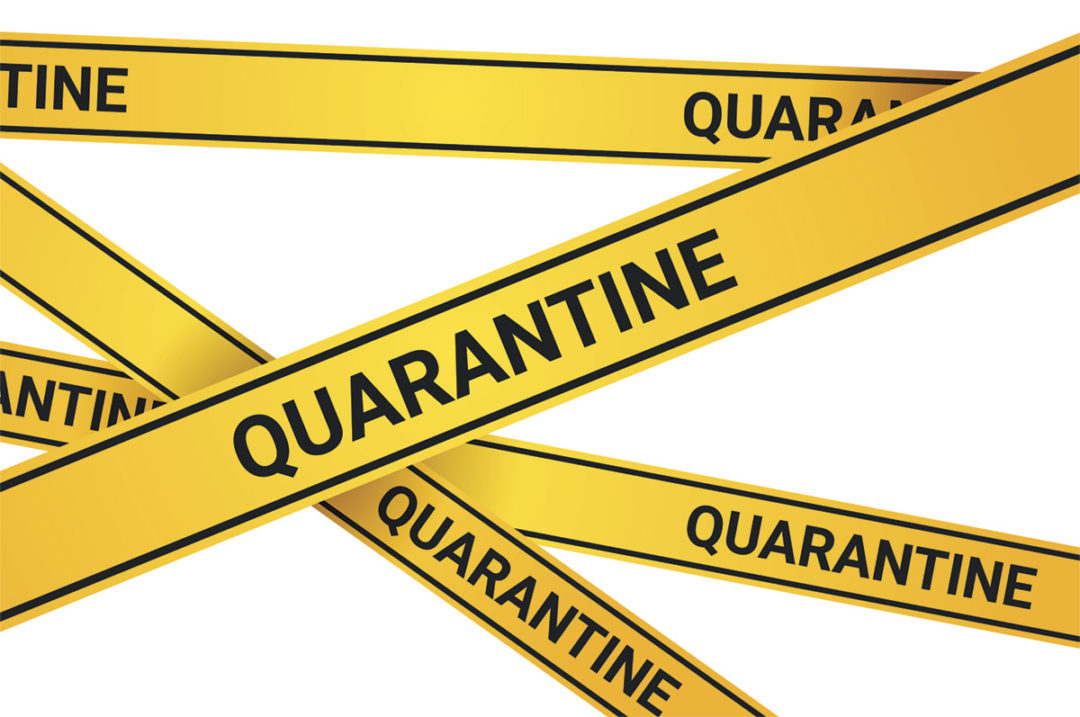Does the sound of a 1,000-pound sneeze and hacking cough send you running to your barn’s medicine cabinet or to phone your veterinarian?
Sickness in horses and cattle can have a long-lasting impact, especially should an outbreak occur when biosecurity and quarantine best practices are not implemented. Lacey Fahrmeier, Valley Vet Supply technical service veterinarian, offered up insight in a Q&A for better understanding of just what those best practices are.
Biosecurity is an important topic to you – tell us why?
FAHRMEIER: Biosecurity is really important. When you consider the big picture – all of the things that we do to ensure our livestock or horses perform at their highest level can, unfortunately, be undone if you're not careful and vigilant about disease control on and off your place. The implementation of biosecurity protocols and management practices will help to reduce or prevent disease transmission from entering your herd.
How can knowing an established baseline be helpful?
FAHRMEIER: Observing them at home will help you to recognize when things are wrong or when they are unhealthy. You want to be able to intervene in the disease process early on, so when they're first showing clinical signs, like maybe their appetite is off or maybe their stool is not its normal consistency. Knowing an established baseline can help you better assess the animal to institute treatment or work with your veterinarian to examine the animal. This is especially important before deciding whether to take them on the road to competition or show, should there be a risk of exposing other animals.
What is the first step toward disease prevention?
FAHRMEIER: Good animal husbandry is really just an extension of biosecurity. Know their established baseline, and make sure your horses and livestock are current on vaccines to shield them from disease risk. Having a solid vaccine program in place and making sure that vaccines are administered in a timely manner – at least a month ahead of travel, so they can offer protection before exposure to pathogens – is crucial. Keep in mind that once you administer the vaccine, they are not instantly protected for that disease. Think of the immune system as a production line of sorts. They need time to respond to that vaccine, make those antibodies and then have enough of those antibodies to be protective.
What are some common disease risks to vaccinate horses and cattle against?
FAHRMEIER: For cattle, some of the greatest disease risks to protect against include infectious bovine rhinotracheitis (IBR) virus, bovine viral diarrhea (BVD) and bovine respiratory disease (BRD). For horses, infectious diseases important to vaccinate against are West Nile virus, "rhino," also known as equine herpes virus (EHV), equine influenza and for high-risk horses that travel frequently, "strangles," also known as Strep equi.
What are biosecurity best practices to consider when taking horses or livestock off-property?
FAHRMEIER: First, always make sure to prevent nose-to-nose contact with other animals to help prevent disease transmission. Also, bring your own buckets and make sure that nobody else uses your equipment. Similarly, don't let your stock drink at communal water tanks at the event or let your animal drink out of the hose directly, and don't submerge the end of that hose into your water bucket. Do your best to limit contact with other horses and competitors who have had contact with other animals. Should there be a disease outbreak, pathogens can live on surfaces like hands and clothing.
What are best practices for quarantining animals?
FAHRMEIER: Whether you took your horse or cattle off property, or you’re adding a new one to the herd, do not put them out with your other animals right away. You really want to keep them separate and isolated from the rest of your stock for 30 days. I know that's not feasible for everyone, though. Keep them in an area where there is no nose-to-nose contact, for sure, and far enough where aerosolized particles won't be able to reach the stock that didn't go on that trip, or your current herd. Keeping the animal quarantined for at least two weeks, ideally 30 days, is best. Make sure you're watching them vigilantly for any signs of disease, such as coughing. Observe daily to see if they maintain a good appetite and do not look "off" in any way.
Why 30 days?
FAHRMEIER: It is always possible the animal can be a carrier that is asymptomatic. From a precautionary standpoint, 30 days allows for that incubation period where a disease may be circulating in their system. You can then put them out with your other horses and livestock with the confidence that the incubation period has passed. If you brought a new animal onto your farm or ranch, in addition to quarantining I would recommend having your veterinarian out to conduct some surveillance testing for diseases that you wouldn’t want entering your herd.
Keep Fahrmeier’s tips in mind to help ensure a clean bill of health for your horses and cattle when you’re out on the road or bringing them home.








